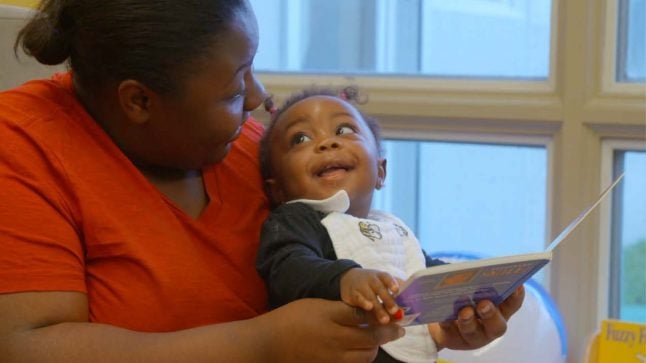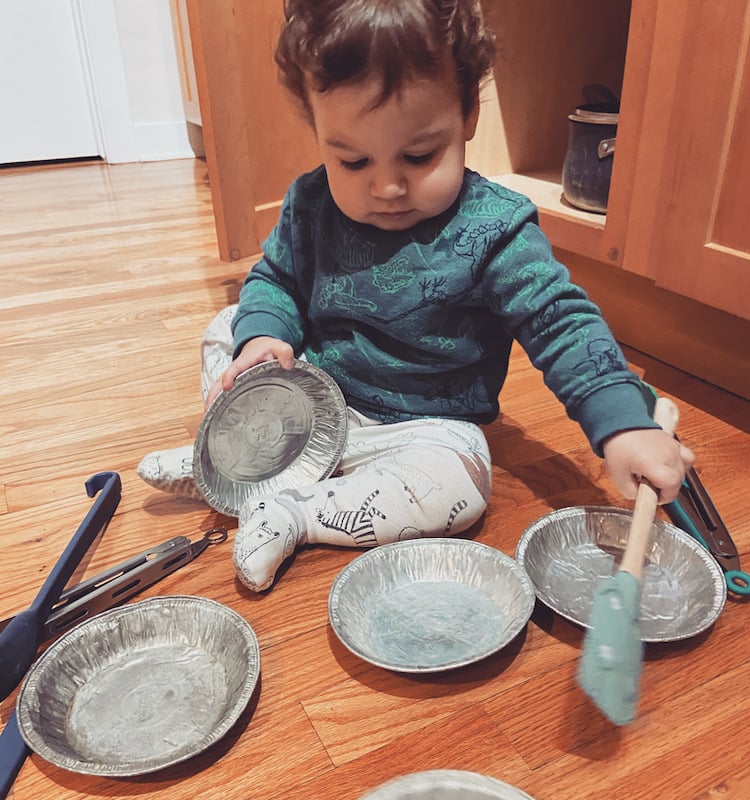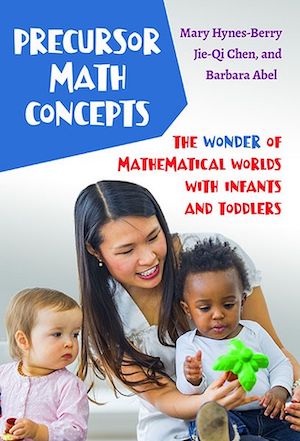Series: About the Collaborative
Groundbreaking Book Explains the Beginning of Math Concepts for Infants and Toddlers

We sat down with Mary Hynes-Berry, one of the authors of the new book, Precursor Math Concepts: The Wonder of Mathematical Worlds with Infants and Toddlers. Released in 2021 by Teachers College Press, this book extends professional knowledge for mathematics teaching to teachers who work with the very youngest learners. We know that children’s brains develop connections faster in the first five years than at any other time in their lives. This book helps us think about how to support children ages 0-3 to explore the mathematics in their world right from the start.
How did you come up with the idea of precursor math concepts? What was your motivation for identifying those concepts and eventually writing this book?
Ten years ago, Jie-Qi, Barbara, and I were working with the teachers at Educare Chicago. We had just finished a professional learning series with the preschool teachers, talking about the Big Ideas of Early Math. As we reflected on the program, Barbara said to us, “You know, 3 is too late. We have to go back much earlier if we want children and their teachers to understand what math really is.” There was virtually no research on math learning for children ages 0-3 at the time. So, we began to struggle together to identify the groundwork for math learning. What must happen before children reach age three and start to do things that are more explicitly mathematical in preschool? And that’s where we came up with the idea for the Precursor Concepts.

What are precursor math concepts and how do they relate to the Big Ideas?
There are four Precursor Concepts: Attribute, Comparison, Change, and Pattern. These concepts develop in stages during the precursor stage of development; the age at which children use their senses to perceive and make sense of the world around them. From about 0-14 months, children are thinking about, “what is this?” They’re in that emerging stage, which is sensory. Then somewhere between about 12-26 months – or even longer because every child is different – they start to think a little more abstractly. They have begun symbolic thought and start to think a bit more about “what can I do with this?” They’re developing agency. Then as they get to be between about 22 and 36 months, they go through an important cognitive shift, and they begin to be able to think in a more abstract way. That is, they can generalize and begin to understand ideas that go beyond their immediate experience. Soon, they are making sense of the Big Ideas.
The title of your book is Precursor Math Concepts: The Wonder of Mathematical Worlds with Infants and Toddlers. What does math teaching and learning look like for infants and toddlers? Is 0-3 too young to be teaching math to kids?
The book is about nurturing mathematical thinking, understanding, and problem solving. When people think about math, they often think of numbers and counting but number is not the most salient aspect of math for infants and toddlers, and counting is not even really a part of math at that age. Our definition is that math is a logical way of thinking that allows for precision and that math is found in everyday routines, interactions, and activities. For children 0-3, we really must find the math that’s right there in their world. This has been a major discovery of our Math All Around Me (MAAM) program, which we’ve done with enormous help as part of the Early Math Collaborative.
Infants are born with amazing cognitive capacity, but they’re still infants and they need nurturing. It’s using our language and actions to heighten these everyday interactions of eating, dramatic play, diapering, etc. and to emphasize the math that is already present in the interactions to support math development. We can emphasize that math by offering them provocations. There is one video that illustrates that really well.
There’s a huge amount of math in this video but there are no numbers. There’s comparison, there’s sorting, there is a lot of thinking about what attributes are and different uses. These are all important math concepts for infants and toddlers to be developing – and for their teachers and the adults in their life to be cultivating – and none of it involves numbers.
Can you explain the CAIR principle?
This is our term for something that has been known since the beginning of human time. When we CAIR, we Closely Attend and then we Intentionally Respond to that individual child, keeping in mind that child’s interests, their needs, their capabilities, their wants. We keep in mind, “what are the funds of knowledge this child brings from their home culture and language?” And we do everything we can to nurture. Humans are social creatures who need to be nurtured if we are to survive and certainly if we are to thrive. That’s the idea behind all the enormous evidence we’re finding at places like the Center on the Developing Child at Harvard University, that children need this positive, interactive communication. From the moment we are born until the moment we die, we need nurturing. And we believe that here at Erikson, that learning takes place in relationships.
Who is the audience for this book?
We wanted to write this book for a wide audience but, primarily, we hope this book will be used in community colleges and other teacher education and certification programs.

Precursor Math Concepts: The Wonder of Mathematical Worlds With Infants and Toddlers
This groundbreaking book looks at the development of mathematical thinking in infants and toddlers, with an emphasis on the earliest stage, from zero to three, when mathematical thinking and problem solving first emerge as natural instincts.